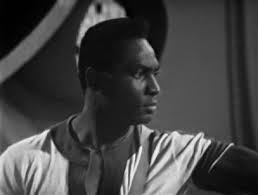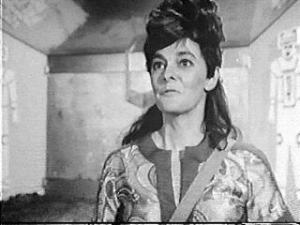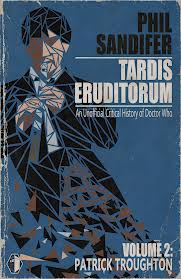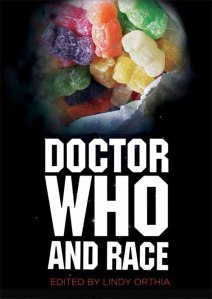I first watched The Tomb of the Cybermen in the wake of Matt Smith’s much publicized disclosure that Tomb was his favourite Doctor Who serial. It’s often said that Smith is channelling Patrick Troughton. I was somewhat bemused, therefore, when I walked away with a rather flat feeling at the serial’s end. It was okay, I thought, but nothing spectacular. My second view, for this marathon, was somewhat more enjoyable, perhaps only because of the elation felt in watching the earliest and first complete Second Doctor serial in the BBC Archives. Nine incomplete serials in a row is a somewhat daunting undertaking so my relief is perhaps entirely understandable.
The second viewing, however, did nothing to soften my discontent with the unnecessary and detrimentally racist stereotypes. For the second serial in a row there is a huge and mute black strongman. In The Evil of the Daleks the character of Kemel was meant to be a Turkish Wrester. The actor who played him, Sonny Caldinez, however was black. In Tomb of the Cybermen we have an equally large black strongman, this time named Toberman, and the “manservant” to the equally mysterious, and racially ambiguous, Kaftan. Early drafts of the script had Toberman (played by Roy Stewart) wearing a hearing aid, however this was written out of the final script.
Shirley Cooklin was the wife of Story Editor, Peter Bryant, and the role of Kaftan was written specifically for her. In the Special Feature, The Lost Giants, which is included the Special Edition of The Tomb of the Cybermen DVD, Cooklin describes the difficulties she faced as an actress. As someone who was not blond haired and blue eyed, she was constantly cast as characters such as French maids. What Cooklin failed to mention in the video, however, was that she was made up to have much darker skin than she ordinarily had. An unspecified accent was used throughout the serial and her very dark complexion was less than subtle in hinting that Kaftan was a mysterious and potentially dangerous outsider. So successful were the make-up artists in disguising Cooklin that Frazer Hines, a known ladies man, tried unsuccessfully to pick her up!
The third member of our trio of crooks was the increasingly manic Klieg, played by George Pastell. Pastell was a Greek Cypriot actor famous for playing swarthy villains. The instigator of a totally crazy plan for world domination in which the Cybermen were to be conscripted as willing assistants, Klieg considered himself the most intelligent and logical person in the world. Clearly he was neither and his arrogance was his downfall.
In between my first and second viewings of The Tomb of the Cyberman I had the misfortune of watching the Series Seven episode, Journey to the Centre of the TARDIS. My choice of the word “misfortune” is quite deliberate because throughout that 2013 episode I experienced the same niggling concerns about racism as I had watching Tomb. The Doctor and Clara find themselves, and the TARDIS, on board an intergalactic salvage ship. The ship is crewed by the brothers Gregor and Bram Van Baalen , together with a humanoid looking android, Tricky. If this was 1967 it would not have surprised me that the characters being “baddies” would also be “black”. This is 2013 however, and I just shook my head in disbelief as the first black characters in Doctor Who for a long time were also villains. Unfortunately most criticism directed to this episode related to allegedly poor acting on the part of Ashley Walters, Mark Oliver and Jahvel Hall. What is more important is that the actors were given little to work with and subjected to negatively stereotypical characterizations.

Incredibly, the only photos I could find online of the Van Baalen brothers, and Tricky, were either from behind or as monsters. Racism was again evident in 2013’s Journey to the Centre of the TARDIS
I am not alone in my concerns about racism and Doctor Who. Philip Sandifer in his blog, and now books, Tardis Eruditorum, is unashamedly critical and has published an excellent essay in the second volume of Tardis Eruditorum, entitled “What do we Make of All These Black Mute Strongmen?”. He describes the decision by writers Kit Pedler and Gerry Davis to characterize Toberman as a black mute strongman not as a conscious act of malice, but rather an example of “unconscious failures to even notice that there’s a problem. More often than not, discrimination is just a particular flavour of stupidity”. In other words, these racist stereotypes are so ingrained that the writers didn’t even realize that they were being inherently racist. Such racism, I would posit, was inherent in the Stephen Thompson penned 2013 story, Journey.
Published in July 2013, the Lindy Orthia edited book, Doctor Who and Race, is a collection of 23 essays on the issue. In May this year there was widespread controversy when Orthia was reported as describing Doctor Who as “thunderingly racist”. The BBC issued a statement which stated as follows:-
“Doctor Who has a strong track record of diverse casting among both regular and guest cast. Freema Agyeman became the first black companion and Noel Clarke starred in a major role for five years [Mickey Smith]. Reflecting the diversity of the UK is a duty of the BBC, and casting on Doctor Who, is colour-blind. It is always about the best actors for the roles”.
I’m still waiting for Doctor Who and Race to be released on Kindle. Once it is I will undoubtedly post a review of it on this blog.
The Tomb of the Cybermen does, however, have its positives. The emergence of the Cybermen from their frozen tombs in episode two is brilliantly done and undeniably iconic. You can even excuse them for using cling wrap as it was as “new” and “exciting” as bubble wrap was to the 1970s Doctor Who designers.
The Doctor’s discussion with the new companion, Victoria, in episode three is as close to tear-jerking as you’ll get. In discussing the death of Victoria’s father (in The Evil of the Daleks), the Doctor gently tells her of his own family recollections – “I have to really want to, to bring them back in front of my eyes. The rest of the time they … sleep in my mind and I forget. As so will you”. The Doctor also discloses for the first time his age and we learn that in earth terms he is roughly 450 years old.
The Doctor and Victoria’s episode three discussion.
Finally, the scene in which the Doctor and Jamie accidently hold hands as they enter the tomb is just fabulous. Both intending to hold Victoria’s hand, they quickly disengage when the manliness of the other hand becomes apparent. In the Special Features Frazer Hines describes how he and Patrick Troughton didn’t officially rehearse the scene. Fearing that their unscripted gag would be cut out, they left its unveiling to the actual filming knowing that cuts were expensive and rarely made.
Frazer Hines and Deborah Watling discussing the making of The Tomb of the Cybermen.
The Tomb of the Cyberman is unfortunately the only complete serial featuring Deborah Watling as Victoria. It’s back to reconstructions and only one complete episode, when I continue my marathon with The Abominable Snowmen.
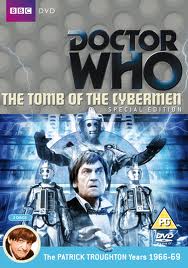
The Tomb of the Cybermen was originally broadcast in the UK between 2 September and 23 September 1967
Vivien Fleming
©Vivien Fleming, 2013.
REFERENCE:
Phil Sandifer, Tardis Eruditorum Volume 2: Patrick Troughton. Self published, 2012.


